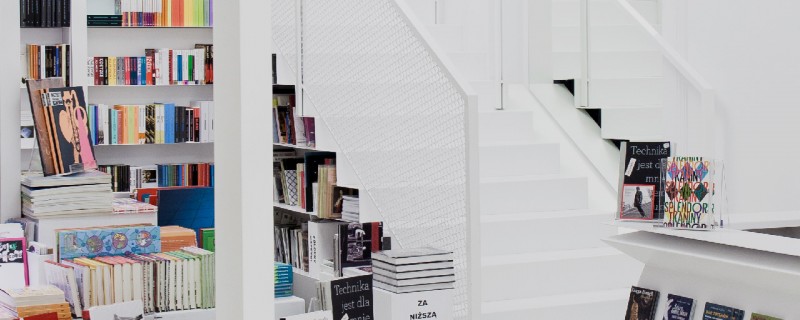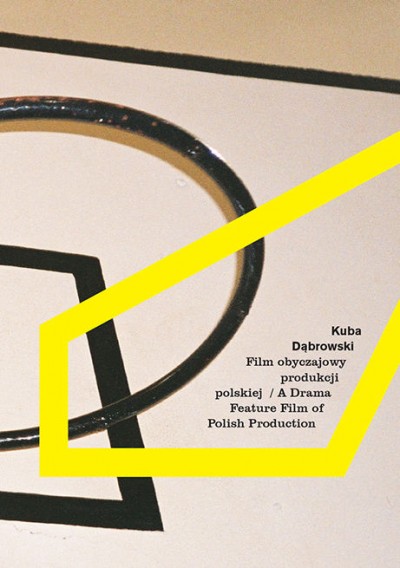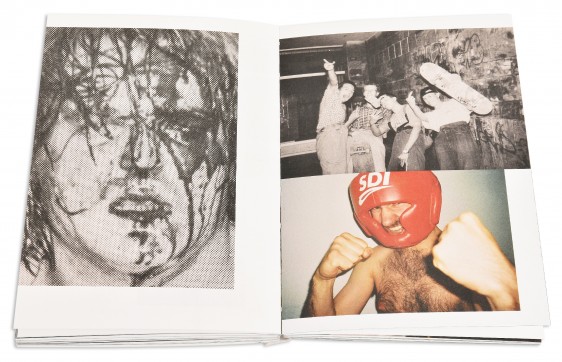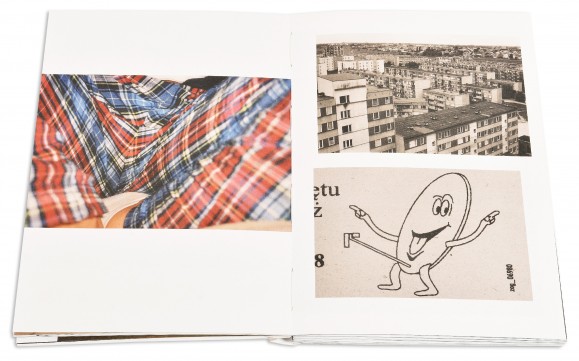
E-bookshop
edited by: Joanna Kinowska
graphic design: Edgar Bąk
publisher: Zachęta - Narodowa Galeria Sztuki
ISBN: 978-83-60713-93-8
From the mid 19th century, there emerged numerous utopian notions of total photography which claimed that one day it would be possible to photograph everything. Today, in the digital era, we are close to the realisation of this idea – it is actually happening. But it does not apply – not entirely, at least – to persons born before the digital era; we do not have photographs of our birth and many other moments, whereas today in such situations we automatically, and without much thinking, reach for whatever camera we hold in our pocket.
Kuba Dąbrowski started taking pictures as a fourteen-year-old, nineteen years ago. He photographed everything he found interesting in the world around him: his friends, the tower-block schemes of Białystok, music concerts, basketball and so on. Then he passed his high school exams, went to study sociology in another city, got his first job – and throughout this time he continued taking pictures. Today he is one of the best-recognised photographers of the young generation. Professionally, as he says, he photographs ‘sometimes Afghanistan and sometimes lipsticks for Chanel’, but he has never stopped documenting his surroundings.
The exhibition “A Drama Feature Film of Polish Production” is an attempt to confront a huge collection of (largely analogue) photographs. These tell a personal story of the author, his habitat, friends, family, his favourite movies, music and sports. The story unfolds from a primary-school scuffle to the author’s changing his baby son’s diapers in a car, but there is no chronological order here. Still, despite appearing loose and open to the viewer’s imagination, the narrative is precise, the order of the images dictated by their message or mood, with the neighbouring photos sometimes explaining or counterpointing each other, whereas the largest-format ones do not necessarily mark any turning points.
We encourage the spectator to treat the exhibition as a film – which is more than just a sequence of isolated scenes – to look at it holistically and identify his own connections. There are certain recurring tropes here. The viewer will quickly find out who the protagonists are and what ‘locations’ the movie was shot on. Unlike in most documentary projects, the photos do not come accompanied by captions stating the date and place of their taking. Instead, some of them have been bundled with context-providing audio recordings, and the whole thing – like a real movie – is accompanied by a soundtrack comprising the author’s favourite songs and those that matter to him for various reasons.
Dąbrowski’s camera may sometimes serve as a pretext for a conversation, but in most cases it is discreet and invisible. It is used to remember a moment, to tell a story, sometimes to reminisce, as in the reproductions of newspaper pages or fragments of important movies or sports games captured from the TV screen that run through the exhibition/film. But it is not the camera that matters the most here – there is no posing, no excessive invention. Instead, there is everyday life and the person of the photographer, that is, the ‘lyrical subject’. A lot of energy, of emotions, of laughter and sadness, of adolescence and being a lad, and also some romanticism and nostalgia – the things all of us remember, though not all of us have it in pictures.
The exhibition presents photographs from the years 1994–2014. On one of the walls, once a week, will be posted images documenting what had happened during the time: the exhibition’s assembly, launch, a meeting with the author, but also a breakfast with family, nice weather, a trip out of town or a friend’s visit. We call this an ‘analogue blog’; in a way, it serves as an update of the show, just like the entries in the blog that Dąbrowski has continued since 2005.
I am the author’s peer. I was born in another city, played in another backyard, and the tower blocks in our neighbourhood were slightly taller. Instead of the skateboard my friends preferred roller blades and bikes, but we all played basketball. “Kuba Dąbrowski. A Drama Feature Film of Polish Production” is, in fact, a film about a friend or neighbour, but also about all of us, about what we remember and identify with. Everyone will see familiar moments and places here and perhaps, upon coming back home, will dig up their photos from ten, twenty or fifty years ago. That’s how it is with photos, but also with movies.
Joanna Kinowska
curator Joanna Kinowska


